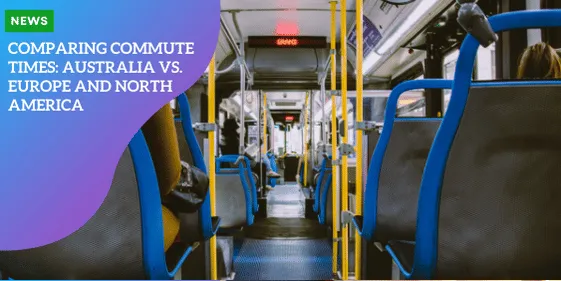Comparing Commute Times: Australia vs. Europe and North America

Introduction
In today’s fast-paced world, where time is of the essence, commuting plays a pivotal role in the daily lives of workers across the globe.
This article delves into the comparative analysis of commute times between Australia, Europe, and North America, highlighting the challenges and potential solutions to mitigate lengthy travel times.
Current Situation in Australia
Currently, the average Australian worker spends over an hour daily navigating rush-hour traffic or grappling with crowded public transportation.
This daily commute exceeds that of many European counterparts and even surpasses car-dependent nations like the United States.
The pressing question remains: why is Australia trailing behind, and what measures can be taken to streamline commute times?
Over the past two decades, commuter times in Australia have seen a steady increase.
For instance, the average weekly commuting time rose from approximately 3.7 hours to 4.5 hours by 2017.
According to Dr. Alan Both from the Australian Urban Observatory, this surge can be attributed to urban sprawl in major cities like Melbourne and Sydney.
The expansion of suburbs without adequate corresponding public transport infrastructure has exacerbated commuting challenges, forcing longer travel distances and increased reliance on personal vehicles.
Comparison with Europe and North America
When compared to Europe, where more than 60% of workers in the EU commute less than half an hour to work, Australia’s commute times pale in comparison.
However, experts caution against direct comparisons due to differing urban structures and population densities.
Cities like Copenhagen, which are smaller and more densely populated, boast shorter commute times due to superior public transport systems and urban planning strategies.
Lessons from International Examples
Government Initiatives and Solutions
Future Outlook
Conclusion
In conclusion, while Australia faces significant challenges in reducing commute times compared to its European and North American counterparts, there are actionable steps that can be taken.
By focusing on enhancing public transport networks, integrating smart urban planning strategies, and drawing lessons from successful international models, Australia has the potential to transform its commuting landscape.
As urban populations continue to grow, addressing these challenges becomes increasingly urgent to ensure sustainable and efficient transportation systems for all Australians.
This comprehensive analysis underscores the importance of proactive governance and innovative solutions in shaping the future of commuting in Australia.
By leveraging global insights and adopting forward-thinking policies, Australia can pave the way towards shorter, more reliable commute times and enhance the quality of life for its residents.






